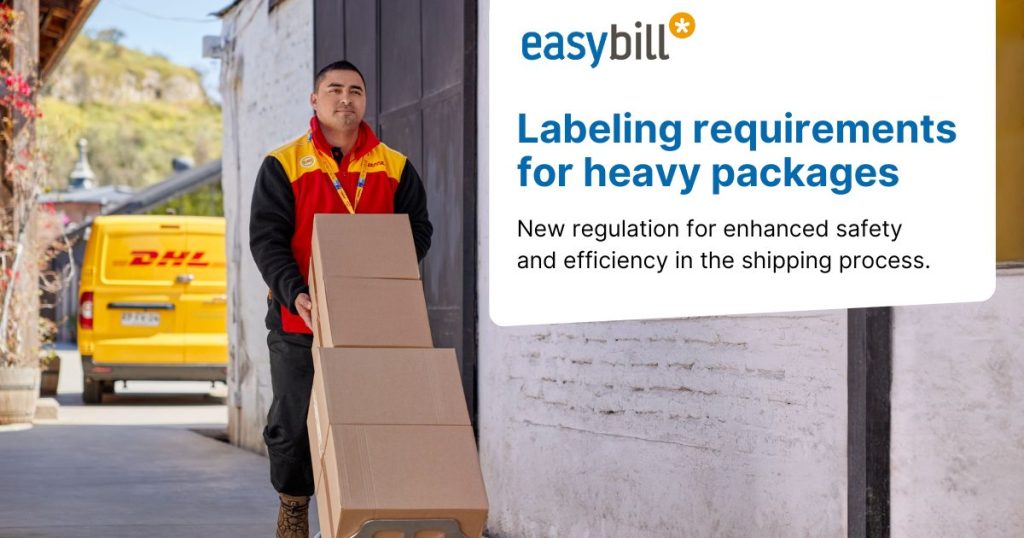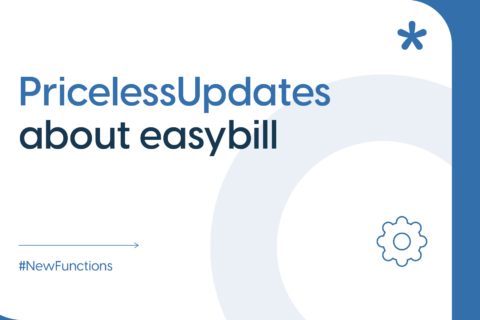
Starting January 2025, packages weighing more than 10 kg as well as those over 20 kg must be clearly labeled with a visible and easily understandable indication of their increased weight. This new regulation under the Postal Act aims to reduce the workload for delivery personnel in the logistics industry and enhance safety in the shipping process. From April 1, 2025, administrative fees will apply for insufficient labeling or missing/incorrect weight declarations. But what does this mean for you as a shipper? In this article, you’ll learn everything you need to know about the new labeling requirements.
Which packages must be labeled?
The labeling requirement applies only to packages that exceed a certain weight: According to the Postal Act, all packages weighing more than 10 kg must be clearly labeled. For packages over 20 kg, there is a separate labeling requirement. This rule applies to both domestic shipments within Germany and international shipments. However, returns are currently exempt from this regulation.
The weight labeling regulation applies to all logistics service providers. Below is an overview of the affected DHL packages.
Packages subject to labeling
- DHL Paket
- DHL Paket International
- DHL Paketmarke
- DHL Paketmarke International
- DHL Paket Production-Based Billing
Packages not subject to labeling
- DHL Retoures
How do you label heavy packages?
The total weight of the package should be clearly indicated on the packaging. The labeling must be displayed on the shipping label as follows:
Labels for heavy packages
Package weight between 10 kg and 20 kg

Package weight over 20 kg

Labeling via DHL systems has been available in the business customer portal since October 2024. In exceptional cases, you can also use a sticker, which can be ordered for a fee in the Post & DHL business customer portal.
Why do heavy packages need to be labeled?
The labeling requirement for heavy packages was introduced to improve the safety of employees in the logistics industry. Heavy packages pose a significant risk, especially if they are lifted or transported incorrectly. The labeling ensures that employees can immediately identify which packages require special care. The goal is to reduce the physical strain on employees and prevent long-term health damage.
Additionally, the labeling requirement promotes more efficient processes in logistics. Clear weight indications make it easier to handle heavy packages and speed up loading and transport. At the same time, better organization in transport helps conserve resources and improve sustainability in the supply chain.
What happens if labeling is missing or incorrect?
As an online retailer, you are legally required to comply with the labeling requirements for heavy packages. Starting April 1, 2025, additional fees will be charged by all shipping service providers if weight information is missing or incorrect. You can avoid these costs by ensuring that labeling is done carefully and completely.
In addition, missing or incorrect labeling can lead to delays in the shipping process. Packages may need to be reprocessed, which can result in longer delivery times for your customers. Proper labeling is therefore not only a legal obligation but also an important factor for customer satisfaction.
Checklist for correctly labeled shipments
- Submit weight correctly in the PAN data
Ensure that the weight of the package is accurately recorded in the electronic shipment data (PAN data). - Apply labeling correctly on the shipping label
Make sure that the labeling with the indication of the increased weight is clearly visible on the shipping label and is placed in a prominent position. - Hand over packages with correct labeling to DHL
Before handing over to your shipping service provider, check that the labeling is complete and error-free. This ensures that your shipments are processed without delays or additional fees.
Creating shipping labels with easybill
As an online retailer, you can use the interface between the easybill Import Manager and DHL to create shipping labels directly from your invoicing software – quickly, easily, and efficiently. To ensure that the weight of your packages is transmitted correctly, it is important to accurately record the weights of your items and define assignments to shipping packaging. This ensures that the labeling of heavy packages can be done without errors.
Safety and efficiency in shipping
The labeling requirement for heavy packages is an important step to ensure the safety and health of employees in the logistics industry. By implementing the requirements correctly, you not only create a safe working environment in shipping but also avoid financial penalties and delays in your shipping process.




